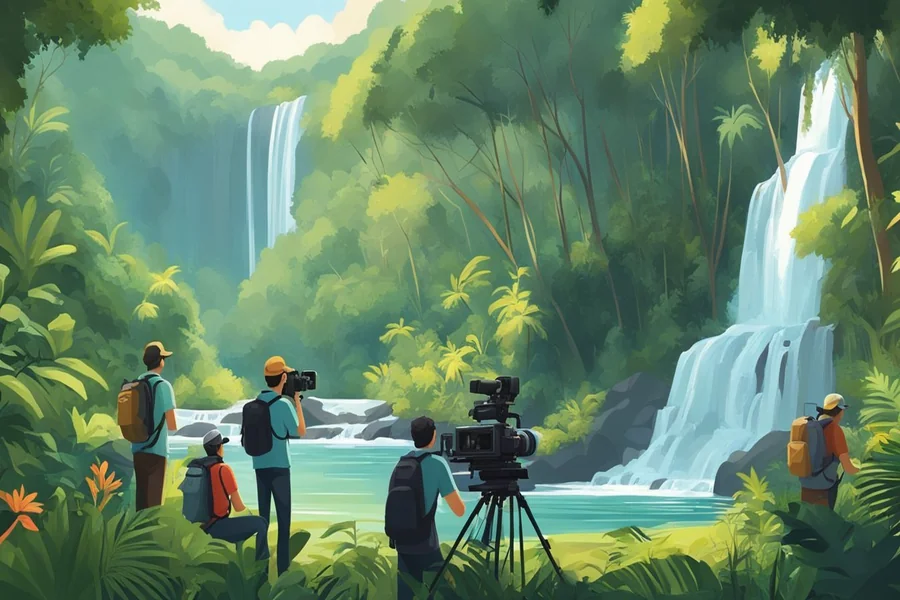In recent years, documentaries have gained significant traction, capturing the attention of both casual viewers and passionate cinephiles alike. Once relegated to educational TV channels or niche film festivals, documentaries have evolved into a mainstream genre that rivals or even surpasses fiction in popularity. With the advent of streaming platforms like Netflix, Amazon Prime, and Hulu, the audience for documentaries has expanded dramatically. But what is driving this surge in popularity? Why are more and more people choosing documentaries over fictional films? This article explores the factors behind the growing appeal of documentaries and why they are becoming increasingly favored over fictional content.
The Rise of Streaming Services and On-Demand Content
Access to a Global Audience
One of the biggest factors contributing to the rise of documentaries is the explosion of streaming services. Platforms like Netflix, Amazon Prime Video, HBO Max, and Apple TV+ have transformed the way we consume media. These platforms have made it easier for viewers to access documentaries on a global scale, bypassing traditional television networks and movie theaters. Documentaries, which were once restricted to niche TV channels or limited releases, now have the ability to reach millions of people around the world with just a few clicks.
The accessibility of documentaries on streaming services has allowed viewers to explore a wide range of topics at their convenience. On-demand content gives users the freedom to watch documentaries at their own pace, without being tied to a broadcast schedule or theatrical release. The ability to binge-watch entire documentary series has also contributed to their growing popularity, as viewers are able to immerse themselves in compelling stories without interruption.
Curated Content and Recommendations
Another benefit of streaming services is their use of algorithms to recommend content tailored to viewers’ interests. By analyzing a user’s viewing habits, streaming platforms can suggest documentaries based on topics that are likely to engage them. This personalized experience encourages viewers to explore new subject matter that they may not have previously considered, broadening the appeal of documentaries to a diverse range of audiences.
This algorithmic recommendation system helps documentaries gain visibility among general viewers who might not otherwise seek them out. As a result, documentaries have become more visible and more likely to appear on people’s radar, even outside of specific genres or interests.
Documentaries as a Mirror to the World
Authenticity and Real-World Relevance
One of the most compelling aspects of documentaries is their ability to capture real-life stories and present authentic experiences. In an era where audiences are increasingly drawn to authenticity and truth, documentaries provide a unique opportunity to engage with the real world in ways that fictional stories cannot.
In a time when news cycles are dominated by misinformation and sensationalism, documentaries offer a sense of trustworthiness and credibility. They are often seen as a source of reliable information that offers an unfiltered look at complex issues. Whether it’s exploring the environmental crisis, uncovering social justice issues, or giving insight into the lives of marginalized communities, documentaries allow viewers to experience real events with a level of depth and context that fiction cannot always provide.
Tackling Social Issues and Raising Awareness
Many documentaries have become vehicles for social change, using the power of storytelling to shed light on critical issues. Films like 13th (2016), which explores racial inequality in the United States, and An Inconvenient Truth (2006), which focuses on climate change, have sparked conversations and raised public awareness about issues that are often overlooked or underrepresented in mainstream media.
By tackling important topics in an engaging and educational way, documentaries have the power to influence public opinion, drive social movements, and even lead to policy changes. This is particularly appealing in a time when viewers are seeking media that speaks to their values and helps them better understand the world around them.
Humanizing Complex Topics
Documentaries have the ability to humanize complex issues, making them more relatable and understandable for a wider audience. Through personal stories, interviews, and immersive footage, documentaries bring the human experience to the forefront, allowing viewers to connect emotionally with the subject matter. This ability to weave a compelling narrative around real events helps documentaries break down barriers and make complex topics accessible to a broader audience.
Take, for example, Won’t You Be My Neighbor? (2018), which chronicles the life of television icon Fred Rogers and his influential show Mister Rogers’ Neighborhood. Through heartfelt interviews and archival footage, the documentary showcases the kindness and empathy that Rogers embodied, while also exploring the impact of his work on children’s television. The film not only educates viewers about Rogers’ legacy but also taps into universal emotions, making it a deeply moving experience.
Changing Viewing Habits and the Appeal of Non-Fiction Storytelling
Binge-Watching and Documentary Series
The format of modern documentaries has also played a significant role in their rise in popularity. Instead of a single feature-length film, many documentaries are now released as limited series or multi-part documentaries. This serialized format, which mirrors the success of TV shows, allows for a deeper exploration of the subject matter and offers a more engaging experience for viewers. Series like The Last Dance (2020), which chronicles Michael Jordan’s career and the Chicago Bulls’ dominance in the 1990s, have proven that documentaries can capture the same level of attention and excitement as fictional TV shows.
The episodic nature of documentary series allows for cliffhangers and narrative development, making them more binge-worthy and keeping viewers coming back for more. This has led to an increase in viewership, as audiences now treat documentaries in a similar way to fictional shows—watching multiple episodes in one sitting and eagerly anticipating the next installment.
Short-Form Documentaries: Quick and Impactful
In addition to feature-length films and series, short-form documentaries have also gained popularity. These quick, easily digestible pieces—often only 15 to 30 minutes long—offer a snapshot of a particular subject or event. Platforms like YouTube and Netflix have embraced this format, offering a wide variety of short documentaries on a range of topics, from pop culture to global politics.
The rise of short-form content aligns with changing viewing habits, particularly among younger generations who have grown accustomed to consuming content in bite-sized pieces. These documentaries are often more accessible and less time-consuming, making them an attractive option for viewers with busy schedules who still want to engage with meaningful content.
The Evolution of Documentary Filmmaking
Innovative Storytelling Techniques
The way documentaries are made has also evolved over the years, with filmmakers utilizing innovative techniques to enhance the storytelling experience. With advancements in technology, documentary filmmakers have access to better cameras, drones, and sound equipment, enabling them to capture stunning visuals and intimate moments in ways that were previously impossible.
Documentary filmmakers are also using virtual reality (VR) and augmented reality (AR) to create immersive experiences that allow viewers to engage with the subject matter in a more interactive way. These technological advancements open up new possibilities for storytelling, allowing documentaries to become even more compelling and engaging.
Collaboration with Fiction Filmmakers
In recent years, many well-known fiction filmmakers have turned to documentaries to explore new narrative forms. Directors like Spike Lee, Werner Herzog, and Ava DuVernay have made the leap into documentary filmmaking, bringing their unique vision and style to non-fiction stories. The blending of traditional filmmaking techniques with documentary storytelling has helped elevate the genre and attract a wider audience.
The Future of Documentaries: A Bright Path Ahead
Continued Popularity on Streaming Platforms
The future of documentaries looks incredibly promising, with the genre continuing to grow in both popularity and influence. Streaming platforms, with their emphasis on diverse and original content, will likely continue to be a primary source for documentary films and series. As audiences demand more content that reflects their interests and values, documentaries will remain a significant part of the entertainment landscape.
Increased Focus on Global Stories
As the world becomes more interconnected, there is a growing demand for documentaries that showcase stories from around the globe. Streaming platforms like Netflix have already begun to focus more on international documentaries, offering viewers a chance to explore different cultures and perspectives. This trend will likely continue in the coming years, as the demand for global storytelling rises.
Conclusion: The Enduring Appeal of Documentaries
Documentaries have become more than just an alternative to fictional films—they have become a powerful tool for education, social change, and entertainment. With their ability to explore real-world issues, humanize complex topics, and offer a window into diverse cultures and experiences, documentaries have captivated audiences in ways that fiction simply cannot. As the genre continues to evolve and adapt to new technologies and viewing habits, it is clear that documentaries are here to stay, and their popularity will only continue to grow in the years to come.



